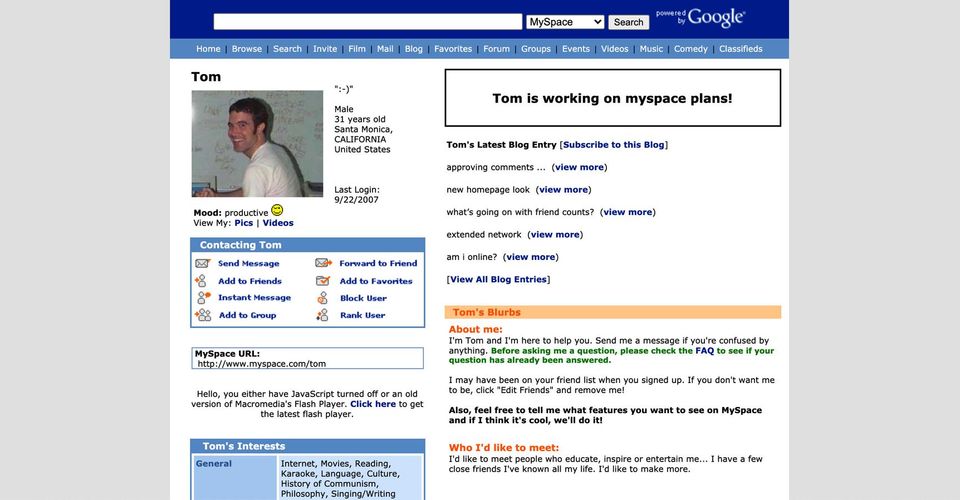MySpace: Why It Failed & When It All Went Wrong

MySpace was the biggest social network site online during the mid-to-late 2000s, with over 75 million users a month at its peak. Unfortunately for MySpace, Facebook — with its innovative features like the now ubiquitous newsfeed — overtook it and never looked back. The demise of MySpace wasn’t just down to Facebook being a superior service, though. It was down to mismanagement too.
The rise of MySpace can be attributed to timing and accessibility. The platform was launched in 2003 and was one of the first social media sites. Friendster predated it and was popular in its own right, but the popularity of Friendster waned as technical problems and a proliferation of ads eroded the trust between Friendster and users. MySpace offered a service that was non-restrictive, let users customize their own pages, and added new features based on user demand. It also attracted a lot of creative people and allowed brands and users to interact with each other as a sort of precursor to modern-day influencers.
MySpace’s success caught the eye of the media conglomerate News Corporation, which bought the social media site in 2005 for $580 million. Initially, New Corp reassured MySpace that nothing would change and that it would take a hands-off role. However, that increasingly proved not to be the case. Sean Percival, former Vice President of Online Marketing at MySpace, said: “The reality was that as time went on, the corporate policies creeped in. The lawyers came in, the accountants. Everything came in. As opposed to being this nimble, fast-moving sports car, they started to become slow … Politics, greed, all the horrible things that come with big corporations, slowly sort-of crept in.”
Greed And Mismanagement

MySpace’s purpose changed upon its acquisition. Now there was more pressure to drive revenue. Deputy Editor of The Economist Tom Standage said in his book Writing on the Wall: Social Media — The First 2,000 Years that “Its new owner treated it as a media outlet rather than a technology platform and seemed more interested in maximizing advertising revenue than in fixing or improving the site’s underlying technology.”
As a result, MySpace became inundated with intrusive ads, many of which led to dubious pages asking users to sign up for credit cards and other services. Money was hemorrhaged out of developer resources as a “massive spaghetti-ball mess” of sections were created to try and generate revenue that would meet News Corp’s unattainable targets. Ultimately, a failure to focus on what its community wanted and the usability of the site saw users leave for other platforms.
Despite multiple attempts to rebrand, MySpace has never since come close to recapturing what it once had and News Corp sold MySpace to Time Inc in 2011 for an undisclosed amount, rumored to be $35 million. The website still exists today as a social media platform focussed mainly on music, but it is much smaller in scale and nowhere near the behemoth it once was. Perhaps true to form, it had to apologize for losing 12 years of content during a server migration in 2019.
About The Author

















